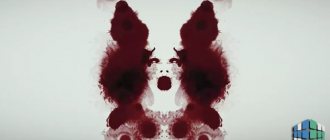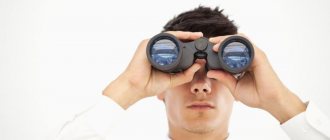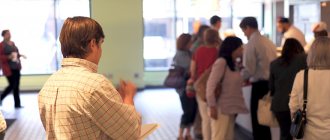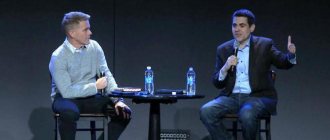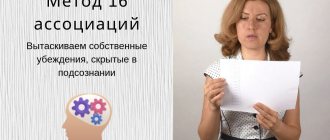| Kind of work: | Essay |
| Date added: | 21.01.2020 |
- This type of work is not a scientific work, it is not a finished final qualifying work!
- This type of work is a finished result of processing, structuring and formatting collected information intended for use as a source of material for independent preparation of educational work.
If you have a hard time understanding this topic, write to me on WhatsApp, we’ll look into your topic, agree on a deadline, and I’ll help you!
If you want to learn how to correctly carry out and write abstracts on any subject, then on the page “what is an abstract and how to do it” I wrote in detail.
Introduction
Experimenter (from the Latin experimentalum - experiment, experience) - a method of studying a phenomenon under controlled conditions. It differs from observation in that it involves active interaction with the object being studied. As a rule, an experiment is carried out as part of a scientific research and serves to test hypotheses and establish cause-and-effect relationships between phenomena.
The relevance of this topic is due to the fact that people are constantly experimenting, this helps in research and the possibility of something new.
I liked the textbook “Experimental and Research Activities of Various Aspects,” authored by Novikov. A.M. He presented the types of experiments and their classification. When preparing my work, I also used the works of such authors as Demidova, A.V., Zagvyazinsky, V.I., Kozhukhar, V.M., Stepin V.S.
Purpose: to study experiment as a research method, define the term “experiment”, characterize the types of experiments, consider the advantages and disadvantages in the process of conducting experiments.
Topic: experiment as a research method.
What is an experiment in scientific research
Experimentation is a method of scientific research, perhaps the most recognizable of a number of methods that also includes description, comparison, and modeling. Although all of these methods use a common scientific approach, the experiment is unique in that it involves manipulating certain aspects of a system, the real life of an object (or phenomenon), and observing the consequences of this manipulation.
Manipulation and control of variables are key aspects that separate experimentation from other methods of scientific research.
Types of experiments
A physical experiment is a method of studying nature, which consists in studying natural phenomena in specially created conditions. The study of a new physical phenomenon begins with observation. Immediately after the observation, a qualitative analysis follows, during which some, often not entirely clear and unambiguous, ideas about the nature of the phenomenon are formulated, as well as ways for its experimental study are outlined.
For example, the English botanist Brown tested it in 1827, at that time inventing a new lens for a microscope. When he used a microscope to look at a suspension of flower pollen in water, he was amazed by the scope that opened up in the field of view of the lens. Brown himself and many other scientists believed that Brownian motion was caused by a special “vital force” that must be in the pollen.
A physical experiment, although related to observation, is no less significantly different from it. This is the next, qualitatively new stage of sensory perception of the phenomenon under study. An experiment includes observation as a necessary component.
During the experiment, not only the phenomenon is reproduced, but its dependence on accompanying conditions and parameters is also studied, and measurements are taken.
A computer experiment (numerical experiment) is an experiment on a mathematical model of the object under study using a computer, which consists of calculating other parameters of the model depending on one parameter of the model, and on this basis draws conclusions about the properties of the object described by the mathematical model.
This type of experiment can only be related to experiments to a limited extent, since it does not reflect natural phenomena, but is only a numerical implementation of a mathematical model created by man. In fact, if the mathematical model is incorrect, its numerical solution may strictly differ from the physical experiment.
To check the correctness of the model building algorithm, we use a test set of initial data for which the final result is known in advance or determined in some other way.
For example, if calculation formulas are used in modeling, it is necessary to select several options for initial data and calculate them “manually”. These are test tasks. After building the model, run tests on the same variants of the input data and compare the simulation results with the conclusions obtained from the calculation. If the results coincide, then the algorithm is designed correctly; if not, you need to look for the reason for their discrepancy and eliminate it.
The test data may not reflect the real situation at all and may not have any meaningful content. However, the results obtained during testing may lead to a change in the original information or symbolic model, especially in the part where the semantic content is embedded.
In order to make sure that the created model reflects the properties of the original that were considered during the modeling, it is necessary to select a test case with real source data.
Psychological experiment - conducted in special conditions A psychological experiment is an experiment conducted in special conditions with the aim of obtaining new scientific knowledge through the purposeful intervention of a researcher in the life of a subject.
Examples of experiments
Some sociological experiments that today do not even come close to meeting ethical standards have become excellent reference points for psychology.
Hawthorne effect
The term was coined in the middle of the last century, the origins of this phenomenon go back to the 20s and 30s of the 20th century. In those years, the American Western Electric conducted a series of labor productivity studies at its Hawthorne plant.
The researchers concluded that the increased productivity was not a consequence of changes in the workplace, but was due to their special role in the experiment, which made the workers believe that they were noticed and appreciated, so they worked harder and harder.
Over time, the idea that participation in an experiment affects a person's attitude became known as the Hawthorne effect, and it was these experiments that gave birth to industrial psychology, which in turn evolved into various specializations such as occupational psychology, health psychology, and positive psychology .
Structure of a psychological experiment
Science differs from any other field of human activity in its goals, means, motives and conditions in which scientific activity is carried out. The goal of science is to comprehend the truth, and the path to comprehending the truth lies through scientific research.
Research, in contrast to spontaneous forms of knowledge of the environment, is based on the norm of activity - the scientific method. Implementation implies awareness and fixation of the purpose of research, research tools (methodology, approaches, methods, techniques), and orientation of research towards the reproducibility of results.
There is a distinction between empirical and theoretical research, although this distinction is relative. Most studies tend to be theoretical and empirical in nature. Each study is not carried out in isolation, but as part of an integral scientific program or for the development of a scientific direction. E. Fromm studied narcissistic personality traits as part of a scientific program to study the causes of “malignant aggression.”
K. Lewin's program served as the basis for his research on rights, achievement motivation, quasi-demands, group dynamics, etc. The program proposed by B.F. Lomov to study the influence of the communication process on cognitive processes, led to the study of the dynamics and effectiveness of joint solving of sensory problems, memorizing material, comparing the processes of individual and group thinking, etc.
By its nature, research can be divided into fundamental and applied, monodisciplinary and interdisciplinary, analytical and complex, etc.
Fundamental research is aimed at understanding reality without taking into account the practical effect of applying this knowledge.
Applied research is carried out to obtain knowledge that must be used to solve a specific practical problem.
Monodisciplinary research is carried out within the framework of one science (in this case psychology). As in the case of interdisciplinarity, these studies require the participation of specialists from various fields and are carried out at the intersection of several scientific disciplines. This group includes genetic research, research in the field of technical psychophysiology, as well as research at the intersection of ethnopsychology and sociology.
Complex studies are carried out using a system of methods and techniques with the help of which scientists try to fix the maximum possible (or optimal) number of significant parameters of the reality under study.
A thought experiment in philosophy, physics and some other fields of knowledge is a type of cognitive activity in which the structure of a real experiment is reproduced in the imagination. Typically a thought experiment is conducted within a model (theory) to test its consistency. Ein Gedankenexperiment kann Widersprüche in den internen Postulaten des Modells oder deren Unvereinbarkeit mit externen (in Bezug auf das Modell) als bedingungslos wahr angesehenen Prinzipien (z. B. dem Energieerhaltungssatz, dem Kausalitätsprinzip usw.) aufdecken.conditions experience for obtaining new scientific knowledge when the help of a targeted study of interference in the life activity of the subject.
Natural and laboratory experiments
This division is also included in the concept of a psychological experiment. Natural research can be correlated to a certain extent with scientific observation, since in this case minimal interference in the course of the mental activity of the subject is assumed. By the way, this is where the significant advantage of the natural method comes from. The subject, due to the lack of interference in his life activity during the experiment, can remain in the dark. That is, the fact of conducting the research will not affect it in any way. On the other hand, due to the lack of control, this method of scientific experiment in psychology is considered ineffective. Opposite characteristics also determine the advantages of a laboratory experiment. In such studies, the tester can, if possible, artificially organize the learning process, focusing on specific facts that interest him. But even in this case, the need for close interaction between the researcher and the subject determines the subjectivity of the result obtained.
Structure of a psychological experiment
Science differs from any other field of human activity in its goals, means, motives and conditions in which scientific activity is carried out. The goal of science is to comprehend the truth, and the path to comprehending the truth lies through scientific research.
Research, in contrast to spontaneous forms of knowledge of the environment, is based on the norm of activity - the scientific method. Implementation implies awareness and fixation of the purpose of research, research tools (methodology, approaches, methods, techniques), and orientation of research towards the reproducibility of results.
There is a distinction between empirical and theoretical research, although this distinction is relative. Most studies tend to be theoretical and empirical in nature. Each study is not carried out in isolation, but as part of an integral scientific program or for the development of a scientific direction. E. Fromm studied narcissistic personality traits as part of a scientific program to study the causes of “malignant aggression.”
K. Lewin's program served as the basis for his research on rights, achievement motivation, quasi-demands, group dynamics, etc. The program proposed by B.F. Lomov to study the influence of the communication process on cognitive processes, led to the study of the dynamics and effectiveness of joint solving of sensory problems, memorizing material, comparing the processes of individual and group thinking, etc.
By its nature, research can be divided into fundamental and applied, monodisciplinary and interdisciplinary, analytical and complex, etc.
Fundamental research is aimed at understanding reality without taking into account the practical effect of applying this knowledge.
Applied research is carried out to obtain knowledge that must be used to solve a specific practical problem.
Monodisciplinary research is carried out within the framework of one science (in this case psychology). As in the case of interdisciplinarity, these studies require the participation of specialists from various fields and are carried out at the intersection of several scientific disciplines. This group includes genetic research, research in the field of technical psychophysiology, as well as research at the intersection of ethnopsychology and sociology.
Complex studies are carried out using a system of methods and techniques with the help of which scientists try to fix the maximum possible (or optimal) number of significant parameters of the reality under study.
A thought experiment in philosophy, physics and some other fields of knowledge is a type of cognitive activity in which the structure of a real experiment is reproduced in the imagination. Typically a thought experiment is conducted within a model (theory) to test its consistency. A thought experiment can reveal contradictions in the internal postulates of the model or their incompatibility with external principles (in relation to the model) that are considered unconditionally true (for example, the law of conservation of energy, the principle of causality, etc.).
Using the experimental method in psychological and pedagogical research
Using the Experimental Method
in psychological and pedagogical research
Plan
- The concept of “experiment”……………………………………………..3
- Main features and objectives of the experiment………………………4
- Types of experiment……………………………………………………………….……6
- The concept of “psychological and pedagogical experiment”………….……..7
List of references………………………………………………………..12
The concept of "experiment"
Experiment is one of the main methods of scientific research. In general scientific terms, an experiment is defined as a special research method aimed at testing scientific and applied hypotheses, requiring strict logic of proof and based on reliable facts. In an experiment, some artificial (experimental) situation is always created, the causes of the phenomena being studied are identified, the consequences of the actions of these causes are strictly controlled and evaluated, and the connections between the phenomena being studied are clarified.
The essence of the experimental method is that the experimenter deliberately creates and in a controlled manner changes the conditions in which the subject being studied operates, sets certain tasks for him and, by how they are solved, judges the processes and phenomena that arise during this process.
An experiment (from the Latin experimentum - test, experience) is a research strategy, which is characterized by the fact that it carries out targeted observation of any process in conditions of regulated changes in individual characteristics of the conditions of its occurrence. In this case, the hypothesis is tested.
For practical problems, it is important that by conducting research under the same conditions with different subjects, the experimenter can establish the age and individual characteristics of the course of mental processes in each of them.
Main features and objectives of the experiment
Many authors highlight the “subjectivity of the object” of research as a key feature of a psychological and pedagogical experiment. A person, as an object of knowledge, has activity, consciousness, and thus can influence both the process of his study and its result. Therefore, special ethical requirements are imposed on the situation of an experiment in psychology, and the experiment itself can be considered as a process of communication between the experimenter and the subject.
The main features of the experiment that determine its strength are as follows.
1) In an experiment, the researcher himself causes the phenomenon he is studying, instead of waiting, as in objective observation, until a random flow of phenomena gives him the opportunity to observe it.
2) Having the opportunity to cause the phenomenon being studied, the experimenter can vary, change the conditions under which the phenomenon occurs, instead of, as with simple observation, taking them as chance gives them to him.
3) By isolating individual conditions and changing one of them while keeping the others unchanged, the experiment thereby reveals the meaning of individual conditions and establishes natural connections that determine the process it is studying. The experiment is thus a very powerful methodological tool for identifying patterns.
4) By identifying regular connections between phenomena, the experimenter can vary not only the conditions themselves in the sense of their presence or absence, but also their quantitative relationships. As a result of the experiment, quantitative patterns that can be formulated mathematically are established. It was mainly thanks to experiment that natural science came to the discovery of the laws of nature.
The main task of a psychological and pedagogical experiment is to make the essential features of the internal process accessible to objective external observation. To do this, it is necessary, by varying the conditions for the flow of external activity, to find a situation in which the external flow of the act would adequately reflect its internal content. The task of experimentally varying conditions in a psychological experiment is, first of all, to reveal the correctness of one single psychological and pedagogical interpretation of an action or deed, excluding the possibility of all others.
Types of experiment
There are two main types of experiments used in psychology:
- a laboratory experiment, which is usually carried out in specially equipped rooms and on subjects who consciously participate in the experiment, although they may not be aware of the true purpose of the experiment;
- a natural experiment in which participants are unaware of their role as subjects.
A natural experiment combines the positive aspects of observational method and laboratory experiment. Here the naturalness of the observation conditions is preserved and the precision of a controlled experiment is introduced. The fact that the subjects are unaware that they are being subjected to psychological research ensures that their behavior is natural.
At the same time, for the correct and successful conduct of a natural experiment, it is necessary to comply with all the requirements that apply to a laboratory experiment.
In accordance with the purpose of the study, the experimenter selects conditions that provide the most vivid manifestation of the aspects of mental activity that interest him.
The concept of “psychological and pedagogical experiment”
One of the variants of a natural experiment is a psychological-pedagogical experiment, or experimental learning, where the study of the mental characteristics of a schoolchild that are subject to formation is carried out in the process of teaching and upbringing.
The psychological and pedagogical experiment was developed in child and educational psychology. This is a unique form of natural experiment, since it is carried out in the natural conditions of life and activity of children.
An essential feature of a psychological-pedagogical experiment is that it aims not only to study itself, but also to actively, purposefully change, transform, form one or another mental activity, the psychological qualities of an individual.
Accordingly, two types are distinguished:
— educational psychological and pedagogical experiment,
— educational psychological and pedagogical experiment.
At the same time, a learning experiment plays a special role in the construction of various theories of mental development. This is a form of natural experiment, which is characterized by the fact that the study of certain mental processes, primarily related to the cognitive sphere, occurs during their purposeful formation.
Thus, a psychological-pedagogical experiment, or formative experiment, is a method used in developmental and educational psychology to trace changes in the child’s psyche in the process of the researcher’s active influence on the subject.
A psychological and pedagogical experiment requires very high qualifications on the part of the experimenter, since unsuccessful and incorrect use of psychological techniques can lead to negative consequences for the subject.
The essence of the psychological and pedagogical experiment is that first they study the characteristics of children’s mental activity (not only the registration of highlighted facts, but also the disclosure of patterns, mechanisms, dynamics, development trends). Then, on this basis, special training is organized in order to optimize the identified processes and promote them to a higher level.
A psychological and pedagogical experiment not only establishes the level of development of memory and other aspects of a student’s mental activity, but studies the possibilities and ways that ensure the improvement of this activity. Here, the study of schoolchildren is carried out in the learning process, the influence of training and education on the development of mental activity of students, on the formation of certain personality qualities is traced. That is why it ensures the connection of psychological research with pedagogical search and design of the most effective forms of the educational process.
In the course of a psychological and pedagogical experiment, the formation of a certain quality is assumed (that is why it is also called “formative”). The formative experiment is widely used in Russian psychology when studying specific ways of forming a child’s personality, ensuring the connection of psychological research with pedagogical search and design of the most effective forms of the educational process.
In psychological and pedagogical research, there are ascertaining and formative experiments. In the first case, the teacher-researcher experimentally establishes only the state of the pedagogical system being studied, states the fact of connection, dependence between phenomena. When a teacher-researcher applies a special system of measures aimed at developing certain personal qualities in students and improving their learning and work activities, they speak of a formative experiment.
During a psychological and pedagogical experiment, two groups usually participate: experimental and control.
Participants in the experimental group are offered a specific task, which (in the opinion of the experimenters) will contribute to the formation of a given quality.
The control group of subjects is not given this task. At the end of the experiment, the two groups are compared with each other to evaluate the results obtained.
During a formative experiment, active actions are performed by both the subjects and the experimenter. A high degree of intervention and control over the main variables is required on the part of the experimenter. This distinguishes experiment from observation or examination.
The formative experiment as a method appeared thanks to the theory of activity (A.N. Leontiev, D.B. Elkonin, etc.), which affirms the idea of the primacy of activity in relation to mental development.
The main stages of conducting psychological and pedagogical research include:
- Studying the state of the problem. Statement of the problem, selection of the object and subject of research.
- Development or clarification of the general initial research concept, putting forward a hypothesis.
- Study planning:
- Determining the goals and objectives of the study.
- Definition of experimental designs.
- Selection of research methods and techniques.
- Determination of mathematical methods for data processing, etc.
- Data collection and description.
- Data processing.
- Evaluating the results of testing hypotheses, interpreting the results within the framework of the original research concept.
- Relate results to relevant concepts and theories. Formulation of general conclusions. Assessing the prospects for further development of the problem.
Compliance with the following basic rules is mandatory for a full-fledged psychological and pedagogical experiment:
- A clear formulation of the problem, goals and objectives of the study, and the hypotheses tested in it.
- Establishment of criteria and signs by which one can judge how successful the experiment was, whether the hypotheses proposed in it were confirmed or not confirmed.
- Precise definition of the object and subject of research.
- Selection and development of valid and reliable methods for psychodiagnostics of the states of the object under study and the subject of research before and after the experiment.
- Using consistent and convincing logic to prove that the experiment was successful.
- Determining the appropriate form for presenting the results of the experiment.
The objectives of specific experiments in the field of didactics and teaching methods for individual subjects most often come down to the following:
1. checking a specific system;
2. comparison of the effectiveness of certain teaching methods;
3. checking the effectiveness of the problem-based learning system;
4. development of systems of measures to develop students’ cognitive interests and needs;
5. checking the effectiveness of measures to develop students’ academic skills;
6. development of cognitive independence of schoolchildren;
7. didactic research related to the choice of the optimal option for a particular system of measures or pedagogical actions:
— updating the system of measures to prevent academic failure,
— choosing the optimal number of exercises to develop a certain skill,
— selection of optimal options for a system of measures to develop planning skills in students,
— building problem-based learning for low-performing schoolchildren.
All these tasks are to a certain extent intertwined with each other, but each of them also has some specific emphasis that determines the features of the pedagogical experiment.
Thus, the range of problems that can be solved with the help of a pedagogical experiment is very wide and versatile, covering all the main problems of pedagogy and psychology.
List of used literature
- Aismontas, B.B. Pedagogical psychology. Schemes and tests [Text] / B.B. Icemontas. - M.: Vlados, 2002. - 208 p.
- Introduction to scientific research in pedagogy: Textbook. [Text] / Ed. IN AND. Zhuravleva. – M.: Education, 1988. – P.94
- Gorbunova, V.V. Experimental psychology in diagrams and tables: Textbook. [Text] / V.V. Gorbunova. – Rostov-on-Don: Phoenix, 2005. – 184 p.
- Druzhinin, V.N. Experimental psychology [Text] / V.N. Druzhinin. – St. Petersburg: Peter, 2001. – 256 p.
- Zarochentsev, K.D. Experimental psychology: textbook [Text] / K.D. Zarochentsev, A.I. Khudyakov. - M.: Prospekt, 2005. - P. 30-51.
- Kondakov, I.M. Workshop on general psychology. Textbook for universities [Text] / I.M. Kondakov. – M.: MGPPU, 2004. – 312 p.
- Kornilova, T.V. Experimental psychology: theory and methods. [Text] / T.V. Kornilov. – M.: Aspect Press, 2002. – 381 p.
- Nemov, R.S. Psychology. Psychodiagnostics. book 3 [Text] / R.S. Nemov. - M.: Vlados, 2001. –640 p.
- Nikandrov, V.V. Observation and experiment in psychology. [Text] / V.V. Nikandrov. - St. Petersburg: Rech, 2002. - p.78.
Benefits of a Thought Experiment
- Common goals. Thought experiments allow participants to achieve intrapersonal goals through the development of self-awareness. These may even be mental goals.
- Any number of players. In a coaching situation, you can conduct a thought experiment with only one participant. At the other extreme, this can be done with a large group of participants who then work in parallel without interacting with each other (as in the example above).
- Anytime, anywhere. Most theoretical experiments do not require special materials or equipment. All that is required is to think within the given structure of the situation.
- Proven technology. This type of activity has received empirical support from various schools of psychology. Behavior therapists, for example, have demonstrated the effectiveness of mental role-playing. Psychologists who have studied creativity have repeatedly demonstrated the positive effects of visualization.
A critical experiment is an experiment whose result establishes beyond any doubt whether a particular theory or hypothesis is true. This experiment must produce a predictable result that cannot be inferred from other generally accepted hypotheses and theories.
Classification of experiment
- Laboratory experiment. A distinctive feature of the conditions in which it is carried out is that these conditions are specially created by the experimenter. The main objective is to ensure high internal validity. It is typical to assign one independent variable. The main method of managing external variables is elimination (liquidation). External validity is lower than in a field experiment.
- Field or natural experiment. An experiment is conducted under conditions over which the experimenter has no control. The main goal is to ensure high external validity. A characteristic feature is the complex independent variable. The main ways to control external variables are randomization (the levels of external variables in the study exactly correspond to the levels of these variables in life, i.e., outside the study) and constancy (the level of the variable is made the same for all participants). Internal validity is generally lower than in laboratory experiments.
- Formative experiment. The experimenter irreversibly changes the participant, forming traits that were not there before or developing traits that are already present.
Thought experiment
An imaginary experience that cannot be realized in reality. Sometimes this category includes mental manipulations regarding the organization and conduct of a planned real experiment in the future. But this preliminary “playing out” of real experience in the mind is, in fact, its obligatory attribute, implemented at the preparatory stages of the study (problem formulation, hypothesis, planning).
Discussions about the “empiricalness” or “theoreticality” of a thought experiment seem to us endless and unpromising, since the boundary between the corresponding types of knowledge and research is very arbitrary. Proponents of the theoretical nature of a thought experiment usually note that its use is mainly associated with the formulation and development of hypotheses [177, p. 167], and not with the stage of collecting data about the object being studied. This is true. A thought experiment serves primarily as a guide to refine a hypothesis and compare it with actual experience. However, all the signs and elements of an empirical real experiment are present in it, but only in a conditionally ideal form: the experimenter directly intervenes (even if imaginary) in the life activity of the object (even if presented in the form of an ideal model); strictly (even conditionally) control and recording of all variables and responses is carried out; Any number of repetitions of the experiment is allowed; an unambiguous understanding of the results of the experiment is achieved, etc. The main options for a thought experiment are ideal, infinite and perfect experiment.
An ideal experiment is one in which the dependent variable is not influenced by any factors other than the independent variable. In reality, it is impossible to exclude the additional influence of several extraneous factors. Therefore, an ideal experiment cannot be implemented in reality. In practice, the approximation of a real experiment to an ideal one is carried out by controlling additional variables that are given in the description of the experimental procedure.
An infinite experiment is an experiment that covers all possible experimental situations for the entire study population (general population). In reality, the set of such situations is infinite due to the huge and often unknown size of the population and the infinite number of factors acting on the subject. Only in the imagination of the researcher can this endless set of situations be taken into account. Because of its limitlessness (in variety and time), such an experiment is called infinite. The practical uselessness of an endless experiment lies in its contradiction with one of the main ideas of empirical research - the transfer of results obtained on a limited sample to the entire population. It is needed only as a theoretical model.
An exhaustive experiment combines the features of both an ideal and an infinite experiment. As a measure of an exhaustive experiment, it gives the opportunity to evaluate the completeness and, accordingly, the imperfection of a specific real experience.
Experimental design
Experimental design methods make it possible to minimize the number of necessary experiments, establish a rational sequence and conditions for conducting research, depending on their nature and the required accuracy of the results. If for some reason the number of experiments is already limited, then the methods provide an estimate of the accuracy with which the results will be obtained in this case. The methods take into account the random nature of the dispersion of the properties of the tested objects and the characteristics of the equipment used. They are based on methods of probability theory and mathematical statistics.
Experimental Design Stages
- Determining the purpose of the experiment (determining characteristics, properties, etc.) and its nature (defining, control, comparative, research).
- Determining the conditions for conducting the experiment (availability or availability of equipment, work schedule, financial resources, number and staffing, etc.). Select the type of testing (normal, accelerated, laboratory-reconstructed, bench, field, full-scale or in-service).
- Determination and selection of input and output parameters based on the collection and analysis of preliminary information. Input parameters (factors) can be deterministic, i.e. determined and controlled (observer dependent), and random, i.e. determinable but not controllable.
- Determination of the required accuracy of measurement results. The type of sample or object under study is selected taking into account the degree of its correspondence to the real product in terms of condition, structure, shape, size and other characteristics.
The assignment of a degree of accuracy is influenced by the manufacturing and operating conditions of the object in the creation of which these experimental data are used. The accuracy of experimental data also significantly depends on the volume (number) of tests - the more tests, the higher (under the same conditions) the reliability of the results.
For a number of cases (with a small number of factors and a known law of their distribution), it is possible to calculate in advance the minimum required number of tests, the implementation of which will allow obtaining results with the required accuracy.
5. Drawing up a plan and conducting an experiment - the number and order of tests, the method of collecting, storing and documenting data.
The order of testing is important when the input parameters (coefficients) when studying the same object during the test take on different values. For example, in step-by-step fatigue tests, the fatigue strength depends on the order of loading because damage accumulates differently, resulting in different fatigue strength values.
The order of experiments is also important during research: depending on the chosen order, when experimentally searching for the optimal ratio of parameters of an object or process, it may be necessary to conduct more or fewer experiments. These experimental problems are similar to mathematical problems of numerical search for optimal solutions.
6. statistical processing of experimental results, construction of a mathematical model of the behavior of the studied characteristics. The need for processing arises due to the fact that selective analysis of individual data that is not related to other results, or their incorrect processing can not only reduce the value of practical recommendations, but also lead to incorrect conclusions.
7. explanation of the results and formulation of recommendations for their use, clarification of the methodology for conducting the experiment. Reducing the intensity of work and reducing the duration of experiments is achieved through the use of automated experimental complexes.
Such a complex includes test benches with automatic setting of operating modes (allows you to simulate real operating modes), automatically processes the results, conducts statistical analysis and documents research. But the responsibility of the engineer in these studies is also great: clearly formulated test goals and a correctly made decision make it possible to accurately find the weak point of the product, reduce setup costs and iterate the design process.
Milgram experiment
The main ethical problem with the Milgram experiment is the extreme psychological stress that was applied to the experiment's participants.
The psychologist's main conclusion was that a person does not consider himself responsible for his actions, but considers himself an instrument fulfilling the desire of another person, in this case a researcher.
The experiment suggests that a person does not need to be evil to participate in an evil system: ordinary people can be easily integrated into evil systems. Submission to authority is a principle that explains legalized violence.
Ringelmann effect
The effect owes its name to a German physiologist who demonstrated it in 1913 in the famous rope experiment. To do this, a group of people and groups were studied who pulled a rope connected to an extensometer.
The Ringelmann effect, also called the stowaway problem, refers to the tendency for productivity to decrease when working in a group, that is, as the number of members increases, the group's productivity decreases because the group's effort is not equal to the sum of all individual efforts.
Monstrous experiment
This experiment, conducted in Davenport (US state of Iowa) in 1939, was called the “Monster Study.” It was a group of stuttering studies conducted on 22 orphans. The study was led by psychology professor Wendell Johnson of Iowa State University and Johnson's master's student, Mary Tudor. She headed the practice of implementing and conducting experiments. The children involved were harassed for six months and then some suffered lifelong consequences.
It was only in 2001 that this experiment was made public. And in 2007, the surviving participants in the experiment received compensation from the state of Iowa.
Stages of experimental activity
- Formulation of a cognitive task, a goal associated with the experimental method.
- Selection of equipment and design of experimental setup.
- A statement of the physical principle on which the experimental method will be applied.
- Observation of a phenomenon, process.
- Measurement (reading the necessary measurements on the equipment, obtaining some experimental data).
- Description, interpretation of experimental data and their analysis.
- Formulation of conclusions, conclusion, practical significance of the results obtained.
Experimental models
Typically, perfect and random experiments are distinguished. The first includes a model of organization, which for one reason or another cannot be implemented in practice, that is, under conditions of scientific observation. This technique not only helps to complete the task set regarding the study of the object, but also helps to improve the experimental method by identifying individual errors. As for the random experiment model, it is based on the concept of a random experiment, which may correspond to a real test, but its result will be unpredictable. The random experimental method requires compliance with a wide range of requirements. For example, the prepared mathematical research model in it must adequately describe the experiment. Also, when setting up a problem, researchers precisely determine the model within which the initial mathematical data for the experiment and the results obtained will be compared.
Features of experiment as a research method
The experiment demonstrates a cause-and-effect relationship, i.e. dependence of the phenomenon being studied on known controlled conditions.
An experiment implies the active intervention of a scientist in the research process; control of this process, as conditions change, is carried out by the scientist himself. Use at least two measurement methods. One of them measures process conditions, the other registers changes occurring in the objects under study. It is necessary to have a hypothesis, that is, an assumption about the nature of the relationship being studied, which will be confirmed or refuted by the experiment.
Technology of the method as a research tool
Compared to practical knowledge through observations, an experiment is organized as a prepared study, which is given a specific task with pre-established parameters for interpreting the result. An important feature is the participation of the researcher in the process of such cognition. In addition, the method of scientific experiment, precisely due to the possibility of organizing its repeated conduct under the same conditions, is distinguished by accuracy and more reliable information. In this way, it is possible to establish causal connections between individual elements of the experiment, identifying other properties with patterns in a particular phenomenon.
When organizing experiments, measuring instruments and technical equipment are often used to ensure the correctness of the data. The classic description of the experimental method can be presented as a laboratory research process, since it is completely controlled by the author, but there are other concepts of this method of understanding reality, which will be discussed below.
Advantages and disadvantages of the experiment
Advantages:
- Ability to study cause-and-effect relationships between events;
- high objectivity, since the results of the experiment are actual events;
- Ability to test the effectiveness of marketing decisions, especially for new products (test marketing);
- Ability to control the environment;
Flaws:
- A probabilistic statement about the strength and nature of the influence of a given independent variable on a dependent variable;
- Uncertainty in the transferability of test results to other environmental conditions;
- The presence of a time lag (lag) between the completion of the experiment and the adoption of marketing decisions;
- Difficulty in eliminating the influence of extraneous influences;
- high time and financial costs;
- high level of risk.
Positive and negative results of experiments
Everyone likes to get positive results from experiments, but they are actually in the minority, especially when it comes to science. Positive results confirm the original hypothesis. Negative or “secondary” results refute it.
These negative results lead to the next stage of the study. Making the results public has a positive impact on the scientific community. The goal is to make these experiments available to the rest of the community, avoiding wasting time and money for the rest of the scientific community and promoting much faster scientific progress.
